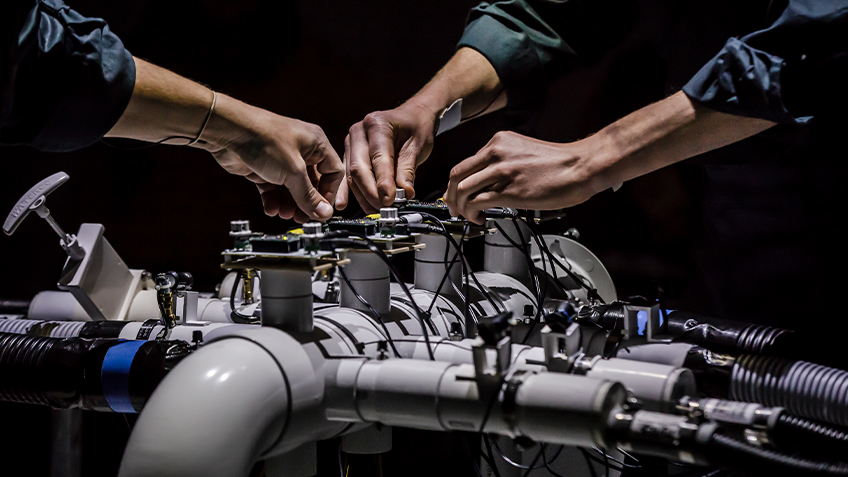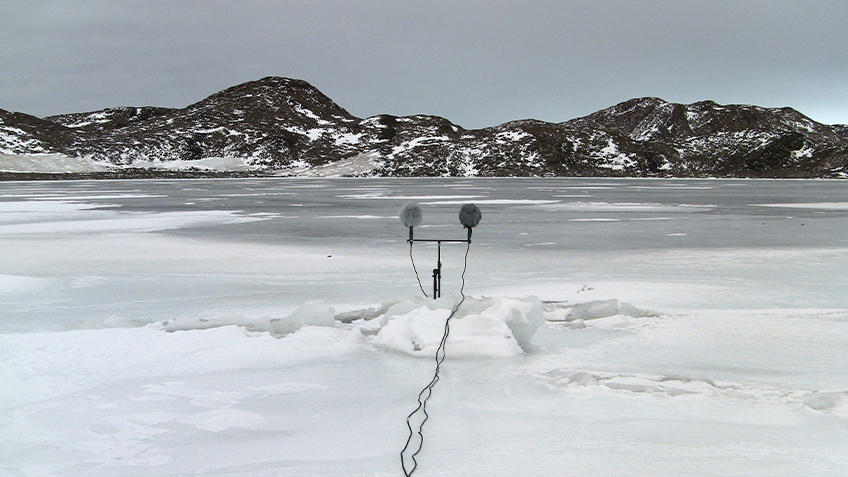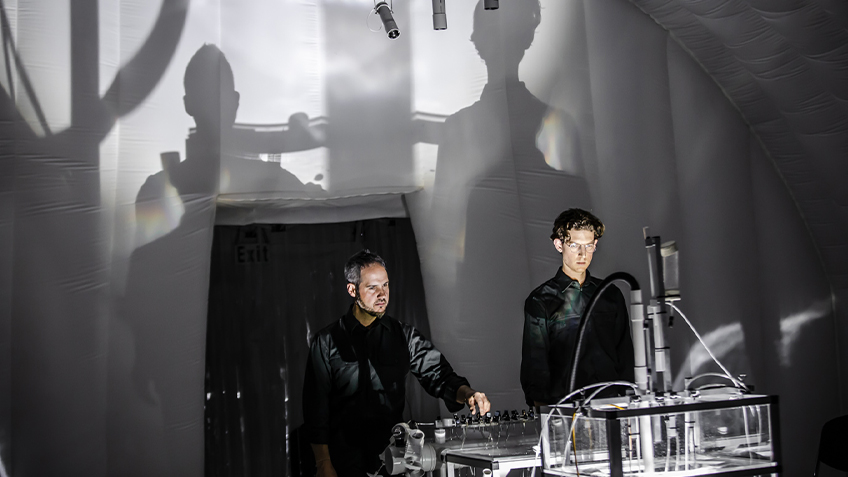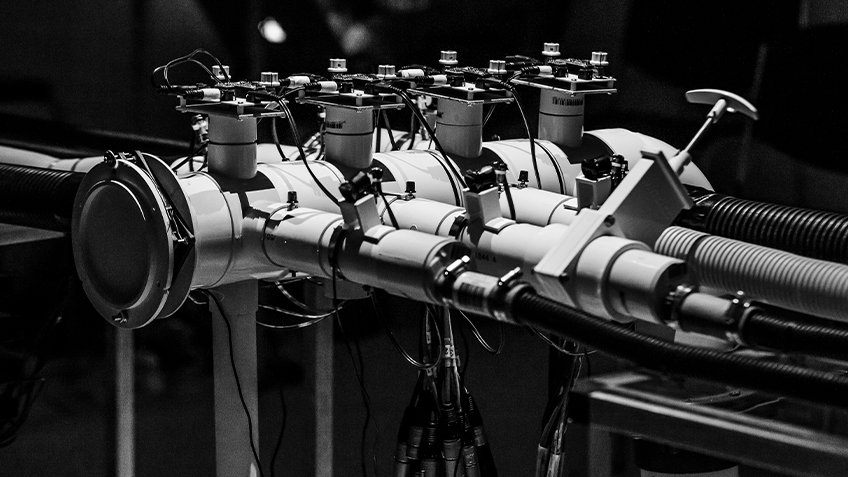Polar Force is a phenomenological investigation of wind, water and ice through sound. It looks to Antarctica, the windiest, coldest and driest continent on earth, a place where these energies flourish and we humans don’t.
Polar Force emerged from a conversation Philip Samartzis and Eugene Ughetti had in 2015 about the musical nature of the Antarctic soundscape. During his first trip to the ice, Samartzis noticed that the built environment of Davis Station often sounded like a monumental piece of 20th century avant-garde music due to structural stress and fatigue caused by the extreme conditions.
For his second trip in 2016, Samartzis strategically applied his recording technology, focusing on the acoustic, material and spatial characteristics of Casey Station as it responded to the withering effects of cold, and the powerful forces of katabatic wind.
In response to the purity and complexity of the field recordings, Ughetti sought a system to enable the live manipulation of wind, ice and water in performance. No off-the-shelf musical equipment was suitable so he embarked on the creation of new instruments fit for purpose.
Speak Percussion bring Polar Force to Carriageworks as part of Sydney Festival 2023. Read below for more information about this unique multi-sensorial live music performance.
Remote Research
Dr Philip Samartzis
Casey Station is the biggest of three Australian Antarctic research stations situated in Eastern Antarctica. Life on the station is a compendium of natural and human sounds.
Dynamic weather patterns inform the way in which sound propagates within the station, leading to complex aural and spatial cues and interactions. With the appearance of wind and snow, the industrial cacophony becomes muted. Gradually snow becomes audible, rhythmically triggering various surfaces with a gentle but persistent patter. As the wind exerts its influence the patter becomes strident with fuel drums, oxygen tanks and steel crates filtering snowfall into syncopated resonant patterns. The snow rapidly changes into hardened granules of ice that congeal into showers of oscillating noise. Eventually Casey is transformed into an intense series of ascending and descending pitches, expressed through miscellaneous surfaces and materials undergoing tremendous stress.
Polar Force is a demonstration of the volatile ecology of nature in extremis through the convergence of natural, anthropogenic and geophysical forces.
Production Design
Clare Britton
The principles at the centre of Polar Force are site-based practice, experimentation, collaboration and listening.
The production design process has been focused on bringing these qualities out in the different forms that make up the work—the sounds, the space, the instruments, the images.
The white half domed structure that houses Polar Force imagines the structures in Antarctica where Phil Samartzis gathered the field recordings that inspired this work. When audiences encounter the work they leave our shoes at the door, and look at one another across the white space. The instruments built for Polar Force are designed to sit in the middle of the space placing sound literally, as well as conceptually, at the centre of this performance.
The production design in Polar Force is intended to allow us to consider the edges of our understanding, to listen to things we can’t usually hear in places we can’t easily go.
Lusca
Concept: Eugene Ughetti
Design and Construction: Nick Roux
The giangantic mythological octopus-like creature Lusca, found in the oceans of the Caribbean, has been the inspiration for the name of our instrument featuring eight corrugated tubes.
Lusca takes air from a fan and distributes it to tubes of differing lengths and diameters. It produces up to eight note chords, with each pitch shifting independently along it’s own unique harmonic series, depending on the air pressure/flow. Inside each tube is a pair of rotating discs. One is manually operated, acting like a flow control or on/off valve. The second disc is motorised and can rotate continuously at variable speeds. Each tube can also pulsate and slide between harmonics with the movement of the discs.
The instrument uses three different speed motors, each emitting electrical energy as they spin. With the use of electro-magnetic coil microphones this energy is converted into sound and can be modulated through the variable speed of the motors.
Sitting at the centre of Lusca is the main air distribution system, which also houses the motor control dials and manual knobs. Fanning out from each side of the centre stretch the corrugated tubes, along a Perspex desk so as to be played like guiros.
Speak Percussion | Polar Force
6-8 Jan 2023
Tickets are still available, book now.



